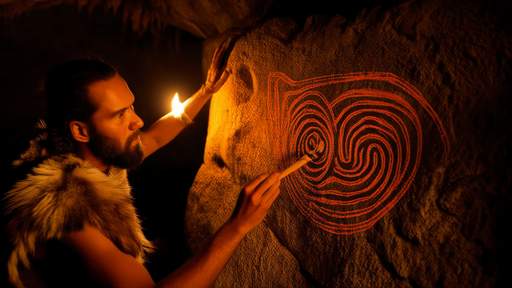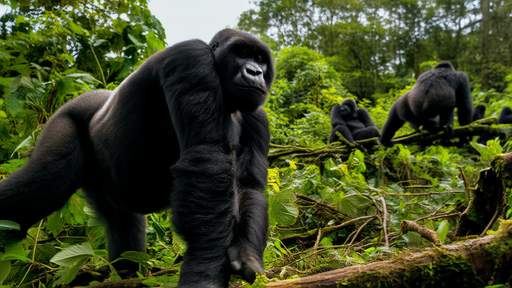In the vast expanse of the cosmos, astronomers are constantly on the lookout for phenomena that challenge our understanding of the universe. One such discovery has recently captured the attention of the scientific community: an enigmatic celestial object named ASKAP J1832-0911, located about 15,000 light-years from Earth. This object is emitting bright flashes of radio waves and X-rays that last for two minutes and repeat every 44 minutes. The discovery, published in the journal *Nature*, marks the first time powerful X-rays have been associated with a long-period transient (LPT), a newly identified class of cosmic objects.
The Enigma of Long-Period Transients
Long-period transients are a recently discovered class of cosmic objects that emit bright flashes of radio waves at intervals ranging from a few minutes to several hours. Dr. Andy Wang, an associate lecturer at the Curtin Institute of Radio Astronomy in Australia and lead author of the study, described these objects as "a mystery." "What these objects are, and how they generate their unusual signals, remain a mystery," Wang said. Fewer than a dozen LPTs have been identified since their discovery in 2022, making ASKAP J1832-0911 a particularly intriguing addition to this rare category.
The Discovery of ASKAP J1832-0911
ASKAP J1832-0911 was first detected by the Australian Square Kilometre Array Pathfinder (ASKAP), a radio telescope located in Western Australia. In December 2023, Wang and his team picked up a bright signal from the object. Subsequent observations in February 2024 revealed extremely bright pulses of radio waves, placing ASKAP J1832-0911 among the top 30 known objects in terms of radio wave brightness.
By a stroke of luck, NASA’s Chandra X-ray Observatory, which was observing a different part of the sky, captured X-ray emissions from ASKAP J1832-0911 during its bright phase. "Discovering that ASKAP J1832-0911 was emitting X-rays felt like finding a needle in a haystack," Wang said. "The ASKAP radio telescope has a wide field view of the night sky, while Chandra observes only a fraction of it. So, it was fortunate that Chandra observed the same area of the night sky at the same time."
The X-ray Puzzle
The detection of X-rays from ASKAP J1832-0911 is particularly significant because X-rays typically originate from extremely hot and energetic environments. "X-rays usually come from extremely hot and energetic environments, so their presence suggests that something dramatic happened to the object," Wang explained. The fact that ASKAP J1832-0911 emits both radio waves and X-rays indicates that it is more energetic than previously believed.
Theories and Possibilities
Initially, astronomers considered the possibility that ASKAP J1832-0911 might be a magnetar, the dense remnant of a star with an extremely powerful magnetic field, or a pair of stars that includes a highly magnetized dead star called a white dwarf. However, neither of these theories fully explained the object's bright and variable emissions. "This object is unlike anything we have seen before," Wang said. "Even those theories do not fully explain what we are observing. This discovery could indicate a new type of physics or new models of stellar evolution."
Global Collaboration and Future Observations
The detection of ASKAP J1832-0911 was a collaborative effort involving telescopes in the United States, South Africa, and India, as well as researchers from around the world. The team used the Coherent Radio Astronomy Core (CRACO) instrument, developed to detect mysterious fast radio bursts and other celestial phenomena, to confirm the repeating nature of the radio wave bursts.
Future X-ray observations may reveal more about ASKAP J1832-0911, such as its temperature and size, which could help determine its true nature. "Finding one such object hints at the existence of many more," said study coauthor Dr. Nanda Rea, a professor at the Institute of Space Science and The Institute of Space Studies of Catalonia in Spain. "The discovery of its transient X-ray emission opens fresh insights into their mysterious nature."
The Broader Implications
The discovery of ASKAP J1832-0911 has significant implications for our understanding of the universe. It challenges existing theories about the nature of long-period transients and suggests that these objects may be more complex and energetic than previously thought. The presence of X-rays in addition to radio waves indicates that ASKAP J1832-0911 is not just another LPT but a unique and extreme example of cosmic behavior.
ASKAP J1832-0911 represents a fascinating new frontier in astronomical research. Its combination of bright radio wave flashes and powerful X-ray emissions defies easy categorization and suggests that our understanding of the cosmos is far from complete. As astronomers continue to study this enigmatic object and search for others like it, they may uncover new insights into the extreme physics and stellar evolution that drive these phenomena. The journey to unravel the mysteries of ASKAP J1832-0911 and other long-period transients is just beginning, promising exciting discoveries and a deeper understanding of the universe.

By Daniel Scott/Jun 6, 2025

By John Smith/Jun 6, 2025

By Daniel Scott/Jun 6, 2025

By Emma Thompson/Jun 6, 2025

By Sophia Lewis/Jun 6, 2025

By Olivia Reed/Jun 6, 2025

By Joshua Howard/Jun 6, 2025

By David Anderson/Jun 6, 2025

By Emma Thompson/Jun 6, 2025

By Emily Johnson/Jun 6, 2025

By Samuel Cooper/Jun 6, 2025

By Emily Johnson/Jun 6, 2025

By Sophia Lewis/Jun 6, 2025

By Jessica Lee/Jun 6, 2025